 Spain – Ver la versión original en español – From the beginning of time, barriers to prevent a potential source of danger have been the survival strategy for animals and humans.
Spain – Ver la versión original en español – From the beginning of time, barriers to prevent a potential source of danger have been the survival strategy for animals and humans.
Some animals still continue using techniques to improve their camouflage and to protect themselves from predators.
As control over the environment improved, humans abandoned the strategies of animals to avoid specific hazards.
Fences, shields, armour and fortress walls are examples of the methods that men adopted for certain risks.
 The fundamental goal is to provide an obstacle to a possible danger.
The fundamental goal is to provide an obstacle to a possible danger.
Road safety uses this approach to limit or prevent critical situations, in many cases resulting from the action of others.
Thus certain situations might be comical because of the unlikely event of an accident.
The origin however, could be based on:
1. Human error or an unexpected situation.
2. Negligent behaviour which increases risk and can cause an accident.
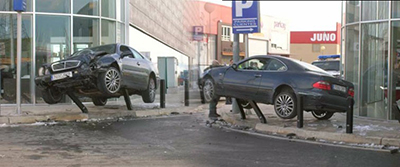
In both models, the human factor is the trigger for the accident. However, the treatment we apply to avoid accidents differs; for human error measures are needed to help the driver. Negligent behaviour also requires professional training to avoid situations of risk by the user..
The design of safe roads is a concept that goes beyond putting an endless number of obstacles on the sides of a road.
Thus these obstacles (containment systems) are defined as a set of elements designed to substitute a more serious accident for a minor one.
This is not always true.
In Spain, the development of road infrastructure came like everything else, later than in the surrounding countries. This can be dated back to 1972 when the first metal safety barriers were installed in order to prevent vehicles from leaving the roads or from going over the edges on mountainous roads.
From this time onwards other road users suffered the consequences of the installation of these new barriers. So the problem that already had been found in countries that had previously installed these elements was moved to Spain.
It was in December 1993, when Spanish society became aware of the danger posed by the installation of metal barriers on roads.
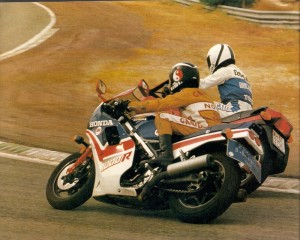 Andrés Pérez Rubio, 47-year-old, Spanish ex-champion of 500cc in 1982 and 1985, had retired from competition, but he continued passing on his knowledge by giving riding classes.
Andrés Pérez Rubio, 47-year-old, Spanish ex-champion of 500cc in 1982 and 1985, had retired from competition, but he continued passing on his knowledge by giving riding classes.
After leaving the Jarama Circuit and refuelling at a petrol station on the N1 road, he had a terrible accident due to the mechanical failure of his Yamaha motorcycle, consequently he brutally struck the metal posts of a safety barrier.
As a result of the impact against metal edges of these posts, his arms were amputated almost to the height of the elbows.
His motorcycle had stopped just 30 metres from where the crash took place, suggesting an appropriate speed and therefore there was no evidence of negligent behaviour on his part which was confirmed by witnesses.
What impressed people in Spain, was a new lesson from “the teacher”, this time, off the track.
Taking control of the situation, he asked people who came to his rescue to pick up his severed arms and immerge them in ice and told them how to apply the tourniquets. Immediately he also told his supporters which hospital and doctors he wanted to attend. Both arms were reattached in a very complex operation.
However, the consequences of such a serious accident were huge.
From this time on, and using the momentum of Andrés Pérez Rubio’s experience, the administration responsible for infrastructure in Spain began re-evaluating crash barriers so that these items became less harmful to all users, including motorcycles.
This was in 1995.
Crash Barriers in Spain – Development of Regulations
After the accident in 1993 of the Spanish ex-champion of 500cc, public opinion in Spain was made aware of the danger of metal crash barriers.
It was from this time, that the Ministry of Public Works (Ministerio de Fomento) began to modify the regulations while installing the first solutions on the roads of Spain, to ensure that the edges of the metal protection barriers would not amputate arms or legs or kill a rider. These elements were designed for cars, but were very aggressive for motorcyclists.
Various changes in legislation accompanied by different solutions were implemented:
– The mounting post IPN with a ban on sharp edges.
– Progressive replacement of IPN posts by models without sharp edges.
|
|
|
|
Protection of the existing IPN posts with metal pipe filled with sand, followed by the protection of posts with different plastic systems and polyurethane were considered urgent actions.
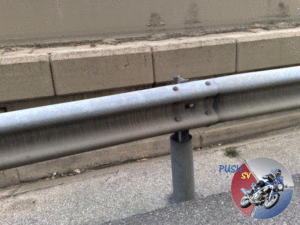 |
 |
|
|
The development of a test and the evaluation of compliance regulations (UNE135900 1 and 2) for a new continuous type of Motorcyclist Protection System (SPM), was designed by the Ministry of Public Works which isolated the impact against the posts of the metal protective barrier to prevent the motorcyclist sliding between these in the case of a crash.
You Tube Video – Test SPM HIASA – CIDAUT (Spain)
Specific rules for the implementation of the SPM on the roads network (RGC) of the Ministry of Public Works.
Without doubt, the most innovative decision was the establishment of the UNE135900 standard, because it defined precisely the type of test to be performed and the evaluation of the results.

Thus, the test replicates the damage that could be suffered by a motorcyclist after falling and hitting against the metal barriers, by using an adapted dummy capable of measuring the damage to the body. The outcome was assessed according to the criteria established by a medical team, so it tried to ensure the effectiveness.
The motorcyclists protection systems developed in Spain had established as a model, the requirements of the Ministry of Public Works and of the UNE135900 standard.
Already in 2005, the need to implement the solutions for improving the safety of motorists in road was evident.
We had however a wide network of roads that needed to be modified with the consequent economic investment and time. On the other hand, there were problems of implementing new solutions that often conflicted with the traditional way of thinking of road safety systems.
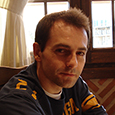 However, the really important problem was the territorial division of highways in which each administration had jurisdiction over their own roads, so only applied its own rules.
However, the really important problem was the territorial division of highways in which each administration had jurisdiction over their own roads, so only applied its own rules.
For this reason, the work of the Ministry of Public Works opened the way to a safer solution, but faces the regional administrations and the enormous economic investment as well as the political will to implement change.
Javier Rodríguez
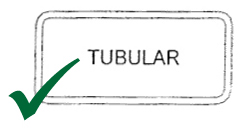

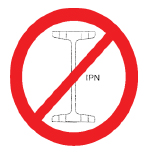



No doubt road barriers saves lives in case of sever accidents and minimizes the danger. It should be installed on priority basis on both sides of roads.
I´ve tried to take a look about Crash Barriers in Spain.
I hope you enjoy it.
Regards.